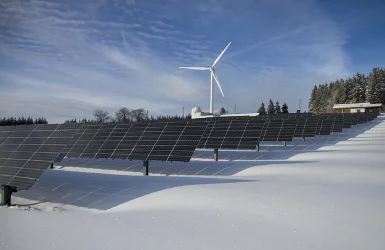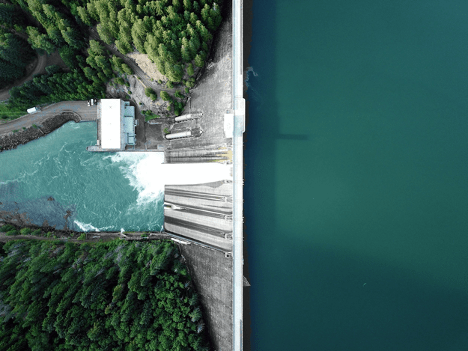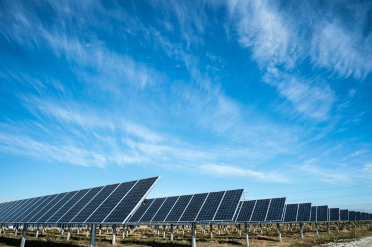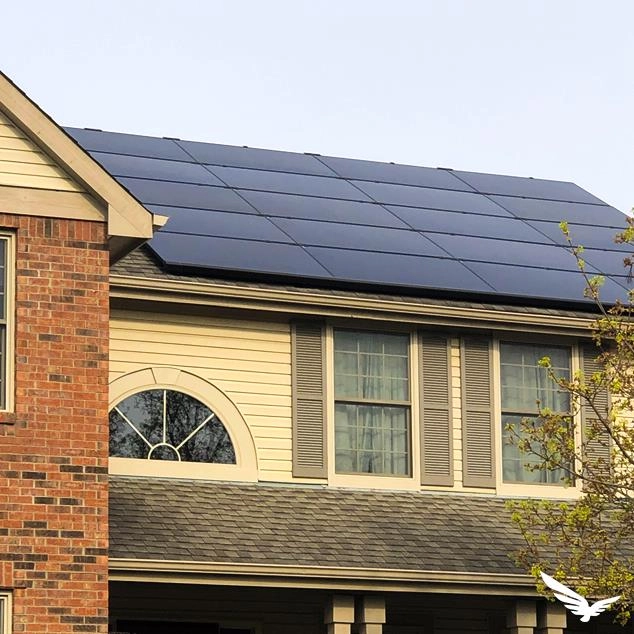
With an increase in climate change concerns over the last several decades, many scientists, climate leaders, and community members have sought to develop and institutionalize sources of renewable energy into their society. Renewable energies have two advantages over their non-renewable competitors like oil or coal.
The first benefit is pretty obvious, as it comes from the name, in that “renewable” energy generates power from a source that cannot be depleted. Its second advantage is that renewable energies produce clean energy that do not give off harmful CO2 emissions or other greenhouse gases. As the years go by, older renewable energy methods are improved upon and new sources of renewable energy are introduced.
This global improvement and development have allowed renewable energy to become a more viable method to replace its unclean counterparts, but are all renewable energies efficient? In today’s post, we’ll walk through the disadvantages and advantages of the major renewable sources of energy being used today.

Wind Energy
Generating power from the wind is one of the oldest forms of renewable energy. It’s been used for thousands of years to move ships across large bodies of water. Eventually, society figured out how to use wind with a windmill to grind grain, pump water, and cut wood.
The first wind turbines to generate electricity were built in the start of the 1900s to bring electricity to rural areas. As electrical grids were built, these turbines lost popularity, but with a rise in climate change concerns, wind turbines have made a huge comeback. Currently, 7.3% of the US’s electricity production comes from wind energy.
Advantages:
- Cost-Effective – Wind turbines are one of the cheapest forms of energy production available on the planet. They don’t require expensive materials to build, they rarely need maintenance, and they last for decades. All in all, the average cost per kilo-watt hour is 1 to 2 cents.
- Strengthens Economy – As wind energy has increased in popularity over recent years, the government has decided to invest billions of dollars in wind energy projects. With those investments, thousands of jobs are created for Americans, cheaper power becomes available to citizens, and the United States becomes a leader in wind energy technology.
- Ground Size – Although wind turbines can be massive structures, they don’t actually take up that much ground space. Because wind energy does not require too much land, many farmers and ranchers can dedicate small portions of their property to wind farming and charge a renting fee. These fees provide extra income to many farmers and ranchers supporting and boosting rural economies.
Disadvantages:
- Remote Location – Most cities and suburbs don’t have ideal or predictable wind patterns. Thus, the majority of wind farms are built in very remote parts of the country. This means that there are extra transportation fees as well as a lack of land in which wind energy is viable.
- Scenery Killer – Massive wind turbines don’t necessarily blend in with beautiful rural settings. Thus, many citizens complain that they have become an eye sore in some of our nation’s most beautiful locations. Not to mention that they are also noisy.
- Threat to Wildlife – It is a pretty commonly known fact that wind turbines kill birds. This unfortunate truth is becoming less common as scientists seek to improve technology so that turbines are placed far from the migratory paths of birds.

Geothermal Energy
American Paleo-Indians used geothermal energy to cook their food over ten thousand years ago. Despite its old history, the development of geothermal sites to produce electricity did not occur in the U.S. until the early/mid 1900s. Geothermal energy uses hot steam and water from vents to spin generators which create electricity.
Today, there are over 60 geothermal power plants in the nation. Geothermal power has come a long way in the last 100 years, but it only produces about 1% of the nation’s power.
Advantages:
- Reliable – Geothermal energy is very predictable. Each power plant knows precisely how much power they can produce from their geothermal source. Reliability is very uncommon among other renewable sources like wind or solar. Thus, accurate projections can be made for new projects and geothermal sources should not dwindle.
- Water Temperature – The earth between the geothermal features and the outside air acts as insulation for hot water. Thus, geothermal features with hot water can be found across the world independent of outside temperature.
- Huge Upside – As it is still a relatively new technology, geothermal energy has the ability to become more efficient and thus a larger source of electricity production for the US. In fact, scientists expect 20-30% of the nation’s electricity generation to come from geothermal energy by the year 2050.
Disadvantages:
- Location Specific – Unfortunately, humans can’t drill into the ground just anywhere and find a geothermal source. Thus, geothermal plants must be built at locations where we know geothermal power potential exists. This not only limits the location but the number of plants that can be built.
- High Costs – Tapping a geothermal source is very expensive. Thus, geothermal energy is by far the most expensive renewable energy available. The typical price range of a plant that produces 1 megawatt of energy is about 2 to 7 million dollars.
- Earthquakes – As geothermal plants require drilling, earthquakes can occur while they are being built. Luckily, plants are usually built far from any urban life meaning that these earthquakes will have little effect on society.

Hydroelectric Energy
Like other renewable energies, hydroelectric energy has a long history. Water wheels were invented thousands of years ago and have been used by several civilizations around the globe to grind wheat.
Within the last couple centuries, scientists have figured out how to harness the power of moving water to generate electricity. In the early and mid 1900s many hydroelectric dams and power plants were built in hopes of providing large quantities of power to the US. Technological improvements continue to improve hydroelectric energy’s efficiency. Currently it produces about 7% of the United States’ electricity.
Advantages:
- Adjustable – One of the unique qualities of hydroelectric energy is that it can be controlled. Because hydroelectric plants lay in front of large sources of water, operators can control the amount of water flow and produce more or less energy depending on the circumstances of the environment and society. Thus, water flow can be increased to prevent a flood or decreased to help during a drought.
- Low Operating Cost – Once the physical dam is built, hydroelectric energy has one of the lowest operating costs for energy production. If built correctly, dams rarely require maintenance, can easily project costs, and can manage the flow of water using gravity.
- Reliable – Hydroelectric energy is one of the most reliable sources of renewable energy. Water flow is always occurring through dams and thus power is always being produced.
Disadvantages:
- Huge Initial Cost – One of the largest downfalls of hydroelectric energy is that it costs millions and in some cases billions of dollars to produce. Its high initial cost prevents a lot of projects from becoming a reality.
- Environmental Damage – Because dams change water flow and cause rivers to become reservoirs, dams greatly impact the surrounding environment. Some fish species like salmon are unable to swim upstream to spawn and other species are affected by the large environmental changes.
- Potential Disaster – In recent years, we have seen a number of dams suffer from massive structural damage and even break. These disasters can cause death and destruction to the environment. Dams must be built with precise planning and no shortcuts.

Solar Energy
Humans have harnessed the power of the sun for thousands of years. Initially, solar power was used to produce thermal energy like heat or fire. It wasn’t until the late 1800s that scientists discovered that light from the sun produces electricity when exposed to specific elements like selenium or silicon.
With more research and testing, the world’s first silicon photovoltaic cell was created in 1954 by scientists Daryl Chapin, Calvin Fuller, and Gerald Pearson. Solar technology has greatly improved in efficiency and cost in the last 50 years. Currently, only about 2% of the United States’ electricity production comes from solar power.
Advantages:
- Available to Consumers – Unlike the majority of renewable energy sources, solar power is available for consumer purchase and use. This means that the climate culture no longer remains controlled by government entities, and that any homeowner can make an impact on the environment.
- Becoming More Cost Friendly – A rise in popularity, competition and technological improvements have allowed solar to become a viable economic option for homeowners and government officials. Hopefully, this advantage continues to trend allowing all homeowners to have access to solar power.
- Saves People Money – Most renewable energy projects are powered by abundant natural resources like sun, wind, or water. Solar is no different and there is a near limitless supply of sunlight (because the sun’s useful life is another 5 billion years). Solar is also now the cheapest form of energy in the world (its even cheaper to build new solar arrays than to maintain existing coal plants).
Disadvantages:
- Rely on the Sun – Unlike the rest of renewable energy sources, solar cannot produce energy during the night. Without sunlight, solar doesn’t work. This also means that each part of the world receives a different amount of light from the sun. This means that more cloudy areas and locals with longer winters will be less effective for producing solar energy.
- High Initial Price – Although prices are decreasing due to competition and developments in technology, solar can still cost homeowners tens of thousands of dollars to purchase. Thus, it’s not economically accessible to a large portion of society, meaning that some people will not be able to make the switch to solar personally and will have to rely on utility scale solar to be developed.
- Disposal Procedures – Current Solar panels have a lifespan of about 25 years. Although they are very green friendly during their lifespan, as soon as they stop functioning, they become difficult to dispose of. Unfortunately, solar panels are not made with recyclable materials, which results in the majority of “dead” solar panels being dumped in landfills. Luckily, scientists are seeking to build a recyclable solar panel that will prevent large amounts of solar waste.

So which Renewable Resource is Best?
Now, we know the advantages and disadvantages of the major global sources of renewable energy, we can determine which is the best. Although they all have beneficial implications for our environment, Blue Raven Solar believes solar power takes the cake because it is accessible to the consumer market.
Not every homeowner can build a dam in their backyard or set up a massive wind turbine, but most homeowners can purchase and place solar panels on their roof. So, if you’re a fan of the green energy movement, don’t hesitate to look into purchasing solar for your home.
Becoming a Part of the Solar Movement
At Blue Raven, we make going solar as simple as possible. All you have to do is fill out a quick form, schedule an appointment, receive a free customized proposal, and talk with one of our solar specialists about whether or not solar panels make sense for your home and situation.
If you’re ready to become a part of the solar movement today, click on the link below, and we’ll contact you as soon as possible!

Sources:
- https://www.eia.gov/energyexplained/wind/history-of-wind-power.php
- https://www.energy.gov/eere/wind/advantages-and-challenges-wind-energy
- https://www.conserve-energy-future.com/geothermalenergyhistory.php
- https://www.twi-global.com/technical-knowledge/faqs/geothermal-energy/pros-and-cons
- https://www.hydropower.org/iha/discover-history-of-hydropower
- https://apecsec.org/8-advantages-and-disadvantages-of-hydropower/



Sorry, the comment form is closed at this time.